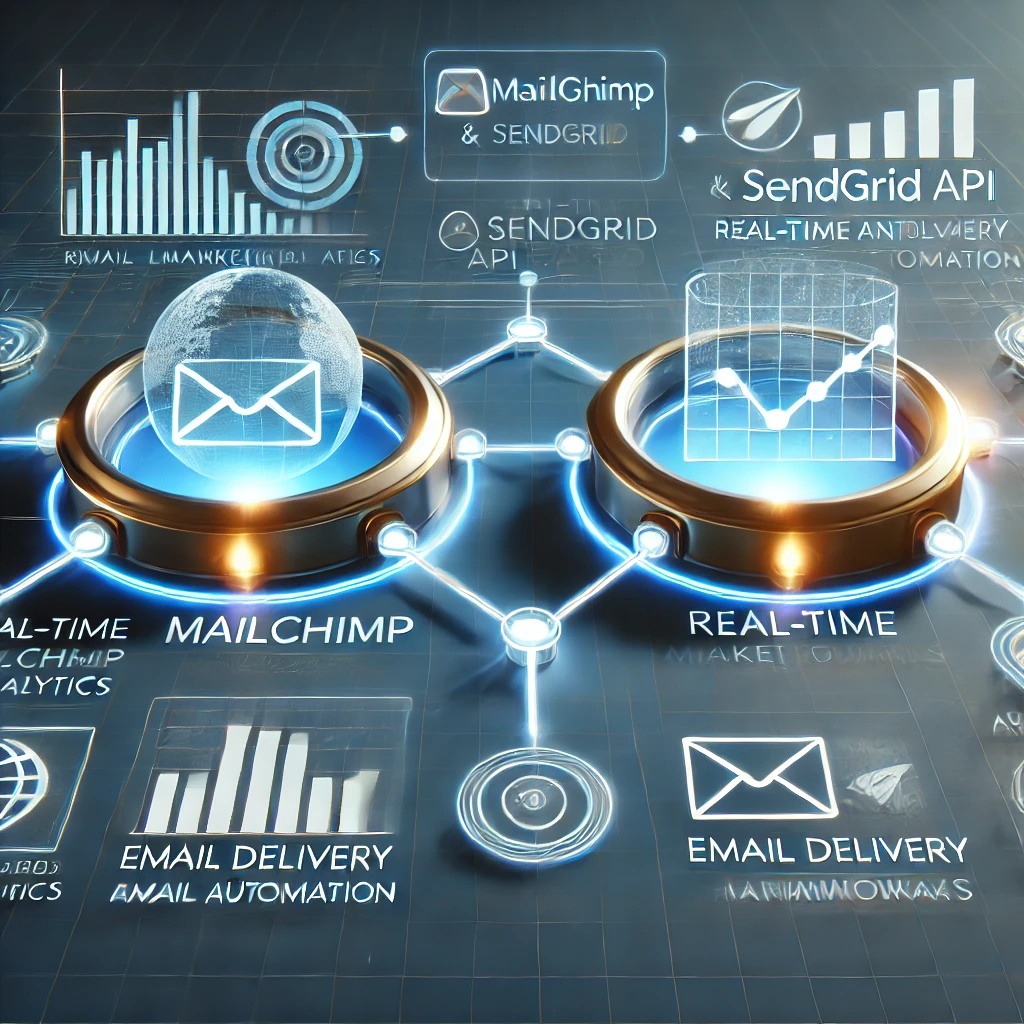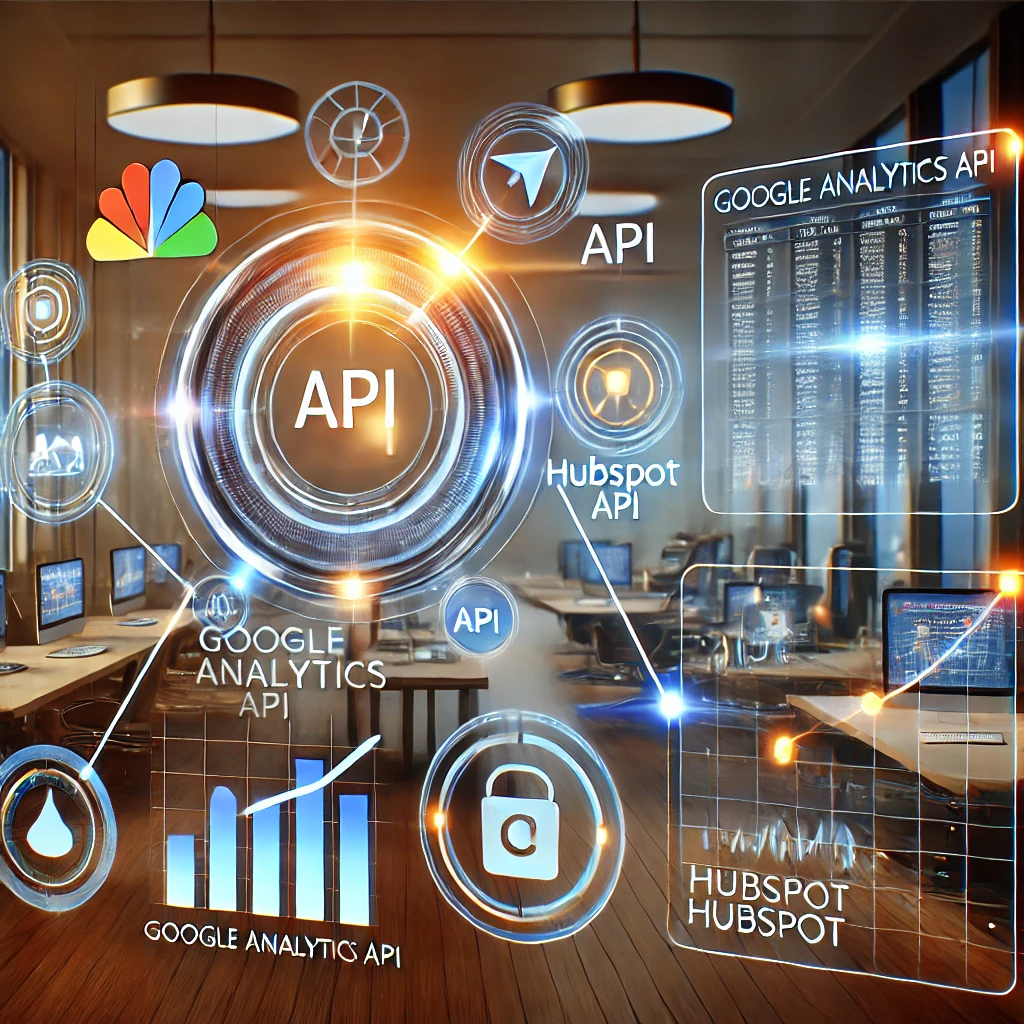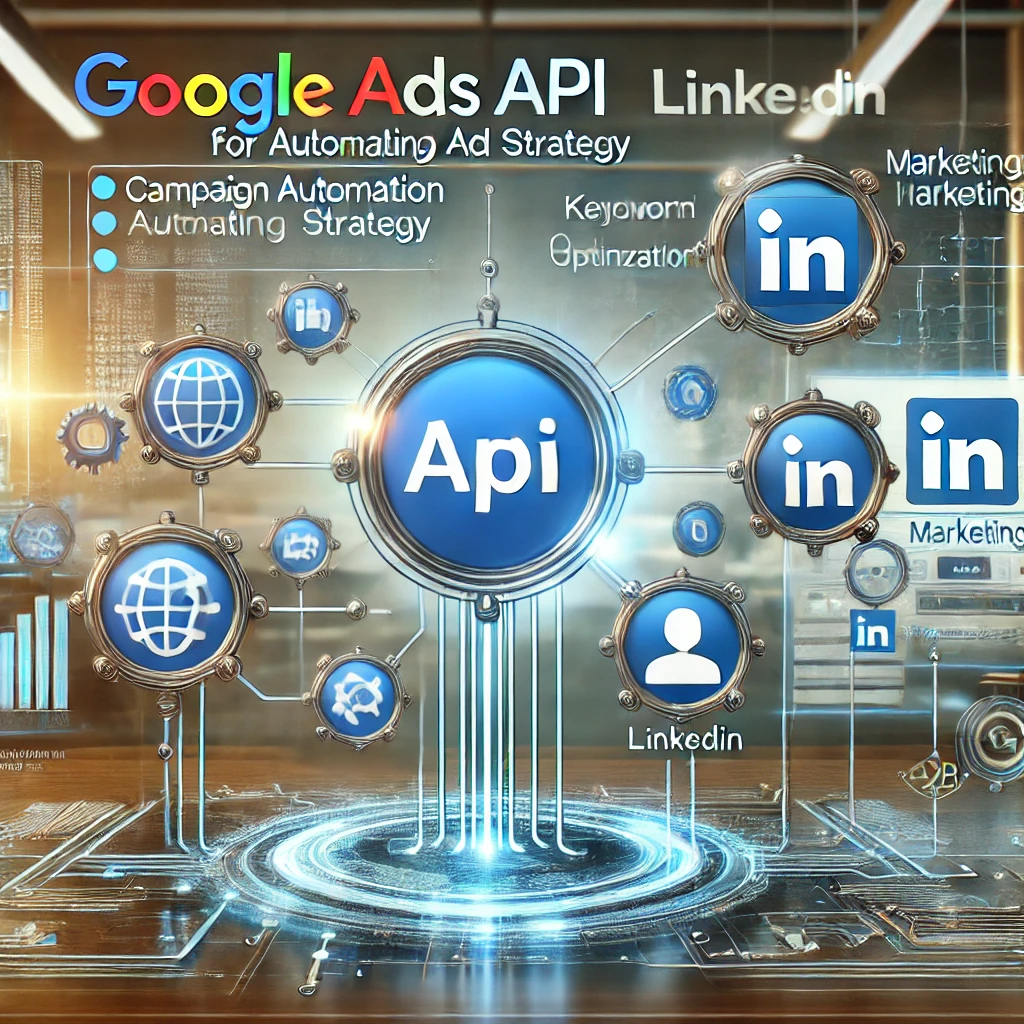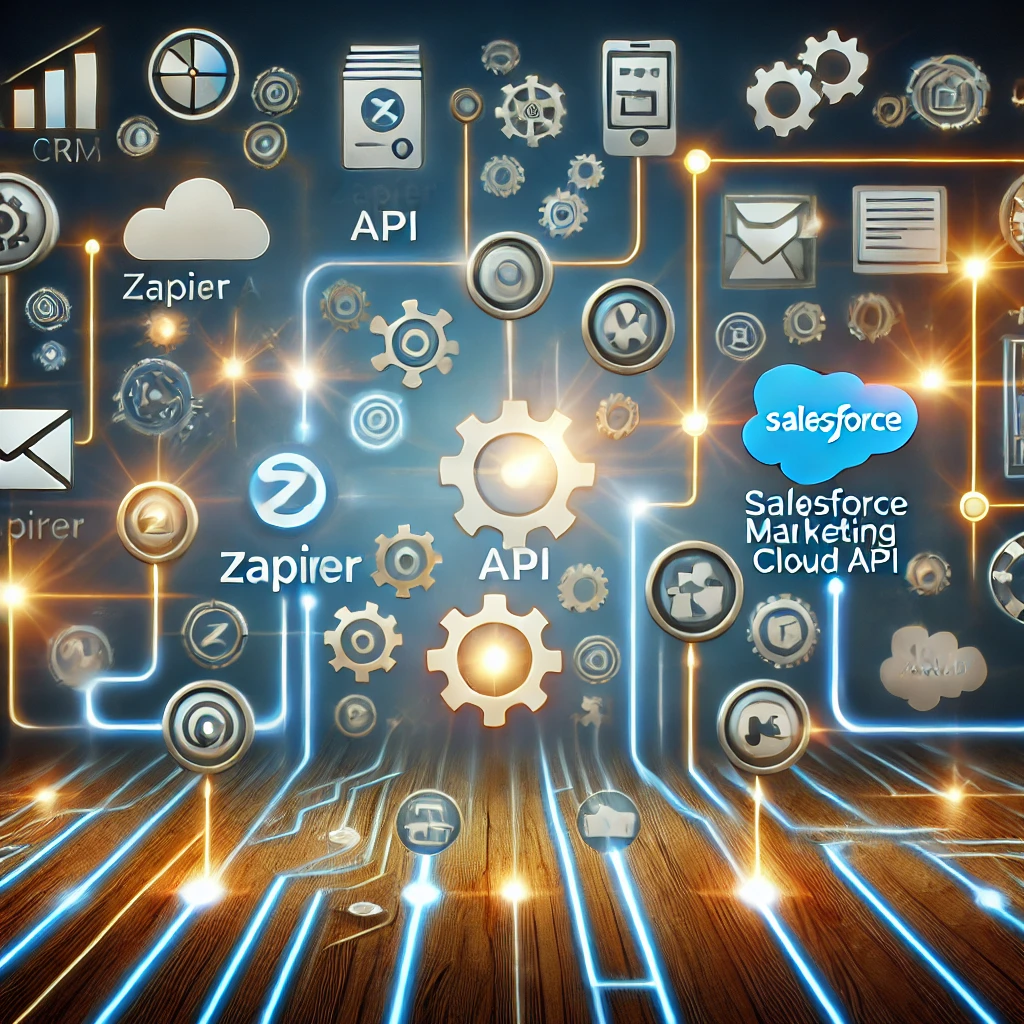API marketing automation is revolutionizing the way marketing teams operate, enabling them to work smarter, faster, and more efficiently. With API marketing automation, teams can eliminate tedious manual tasks, such as data entry or content scheduling, and instead focus their energy on creative strategies that truly drive results. By integrating multiple platforms through API marketing automation, businesses can create seamless workflows that connect tools like email marketing software, CRM systems, social media management platforms, and analytics dashboards.
The power of API marketing automation lies in its ability to enhance data flow between systems, ensuring that all platforms share up-to-date, accurate information. This real-time connectivity not only boosts productivity but also minimizes errors, which are often inevitable in manual processes. API marketing automation empowers marketing teams to automate repetitive tasks such as email campaign scheduling, social media updates, and performance tracking, freeing them to concentrate on crafting impactful campaigns and strategies.
In addition, API marketing automation enables the creation of highly customized workflows tailored to a team’s specific needs. For example, an API can trigger an automated email whenever a lead performs a specific action on your website, ensuring timely and relevant engagement. As a result, API marketing automation helps businesses deliver more personalized customer experiences, which in turn drives higher engagement and conversion rates.
In this guide, we’ll dive deep into the best tools for API marketing automation and demonstrate how they can elevate your team’s performance. Whether you’re looking to optimize your email campaigns, streamline your social media management, or gain actionable insights through analytics, API marketing automation is the key to unlocking your team’s full potential.
Table of Contents
Why API Marketing Automation is a Game-Changer for Teams
Marketing teams handle a myriad of tasks daily, from managing campaigns to analyzing data and engaging with audiences. API marketing automation bridges the gap between platforms, enabling seamless data exchange and automated workflows.
For instance, imagine syncing your email marketing platform with your CRM automatically. An API can do this in real time, ensuring that customer data is always up-to-date. This eliminates the need for manual input, reducing errors and saving countless hours. Whether you’re tracking leads or managing content distribution, APIs enable you to do it efficiently and effectively.
Top APIs for Email Marketing Automation
1. Mailchimp API: Personalize and Automate Campaigns
The Mailchimp API is a game-changer for email marketing, providing marketing teams with the tools they need to personalize, automate, and manage email campaigns effortlessly. This API goes beyond basic email automation by offering a wide range of features that cater to both small businesses and large-scale enterprises.
One of its standout features is custom audience segmentation, which allows marketers to divide their audience into targeted groups based on behavior, demographics, or engagement. For instance, you can create a segment of users who abandoned their carts and trigger an automated email campaign to bring them back. This kind of precision ensures that the right message reaches the right audience, increasing engagement and conversion rates.
The API also provides real-time analytics, giving teams access to crucial data such as open rates, click-through rates, and overall campaign performance. By integrating this data into dashboards or analytics tools, marketers can track the success of their campaigns and make data-driven decisions to optimize future efforts.
2. SendGrid API: High-Deliverability Email Marketing
The SendGrid API is a powerful tool for ensuring high email deliverability. It provides advanced features such as real-time email activity tracking, automated email templates, and sophisticated analytics to monitor campaign performance. Ideal for both transactional and promotional emails, SendGrid allows marketing teams to maintain a professional and reliable presence in customers’ inboxes.
Marketing teams can integrate SendGrid with other tools like CRMs or analytics dashboards to automate email workflows and better understand customer engagement. With its robust infrastructure, the API helps ensure your emails avoid spam filters and reach their intended audience.

Streamlining Social Media Management with APIs
3. Twitter API: Automate Your Engagement
The Twitter API offers marketing teams the ability to post tweets, monitor engagement, and even track trending topics directly from their tools. By automating repetitive social media tasks such as scheduling posts or replying to mentions, teams can focus more on strategy and less on execution.
For example, you can create a bot that tracks and interacts with specific hashtags or mentions in real-time, ensuring timely engagement with your audience. The Twitter API also supports advanced data analysis, enabling you to measure the effectiveness of your campaigns.
4. Meta (Facebook & Instagram) Graph API: Unified Social Management
The Meta Graph API combines the power of Facebook and Instagram into one interface. It allows marketing teams to automate post scheduling, track ad performance, and access deep insights into audience behavior. With this API, teams can create targeted campaigns that are personalized and data-driven.
By integrating the Meta Graph API with your marketing stack, you can ensure seamless cross-platform engagement while maintaining consistency in your messaging.

Enhancing Data Analytics with Marketing APIs
5. Google Analytics API: Insights for Smarter Decisions
The Google Analytics API empowers marketing teams to access, analyze, and visualize website performance data. By connecting the API with other marketing tools, you can automate reporting, monitor key performance indicators (KPIs), and uncover actionable insights without manual data exports.
For instance, integrating the Google Analytics API with a data visualization tool like Tableau allows you to create real-time dashboards that track traffic, conversions, and user behavior. This helps marketing teams make informed decisions faster.
6. HubSpot API: Centralize Your Marketing Data
HubSpot’s API allows you to manage all your marketing data in one place, from email campaigns to lead generation and analytics. By integrating HubSpot with other platforms, you can sync data seamlessly, track user journeys, and personalize marketing efforts.
With the HubSpot API, automating tasks such as updating CRM records, segmenting audiences, or triggering campaigns based on user activity becomes effortless. This not only saves time but also ensures accuracy and consistency in your marketing operations.

Transforming Advertising Campaigns with APIs
7. Google Ads API: Automate Your Ad Strategy
The Google Ads API is a must-have for marketing teams looking to scale their advertising efforts. It enables you to create, manage, and optimize ad campaigns programmatically. From adjusting budgets to analyzing performance metrics, the API allows you to automate complex tasks with precision.
Marketing teams can integrate Google Ads API with analytics tools to track ROI and ensure campaigns are driving measurable results. With real-time updates and performance insights, this API simplifies the management of large-scale campaigns.
8. LinkedIn Marketing API: B2B Marketing Simplified
For teams focusing on B2B marketing, the LinkedIn Marketing API is invaluable. It allows you to automate ad creation, track performance, and access audience insights tailored to professional networks.
The API enables marketing teams to target specific industries, job roles, or seniority levels, ensuring your ads reach the right audience. Additionally, you can use the API to monitor engagement and fine-tune campaigns for better results.

Integrating Marketing APIs for Maximum Impact
9. Zapier API: Connect Everything
Zapier is the ultimate tool for connecting multiple APIs without requiring coding expertise. By using Zapier’s API, marketing teams can automate workflows between apps like Mailchimp, Slack, and Google Analytics.
For example, you can set up a workflow that automatically sends a follow-up email via Mailchimp whenever a new lead is added to your CRM. This level of integration ensures that your marketing efforts are synchronized across platforms.
10. Salesforce Marketing Cloud API: Enterprise-Level Integration
The Salesforce Marketing Cloud API offers enterprise-level solutions for email, social media, advertising, and data management. It provides extensive customization options, allowing teams to create highly tailored campaigns.
With Salesforce’s robust API, marketing teams can unify their customer data, automate personalized marketing messages, and gain deeper insights into campaign performance. This ensures consistency and scalability across all marketing channels.

How to Get Started with API Marketing Automation
Implementing API marketing automation doesn’t have to be overwhelming. Start by identifying your team’s biggest pain points and selecting APIs that address those needs. Integrate them gradually, ensuring each one aligns seamlessly with your existing tools and processes.
To make the most of these APIs, invest in tools like Zapier for no-code integrations or hire a developer to build custom workflows. Testing and optimizing are key to ensuring your automation efforts drive the desired results.
If you’re intrigued by how API marketing automation can streamline your workflows and boost your team’s efficiency, don’t miss our related blog: Beginner’s API Guide: 8 Essential Tools Every Small Business Should Use for Seamless Integration. While this blog focuses on advanced tools to supercharge your marketing automation strategies, the Beginner’s API Guide is the perfect starting point for understanding the foundational tools that make seamless integration possible. Together, these blogs provide a comprehensive roadmap—from mastering the basics to leveraging powerful marketing APIs—to help your business thrive in an increasingly automated world. Dive into both and empower your team to take efficiency to the next level!

